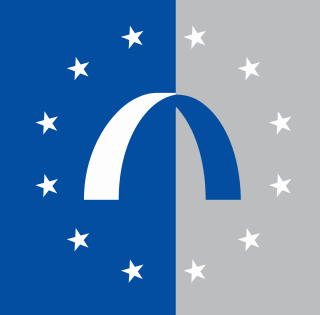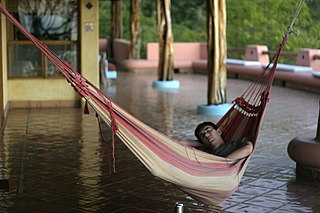Related Research Articles

Modafinil, sold under the brand name Provigil among others, is a wakefulness-promoting medication used primarily to treat narcolepsy. It is classified as an eugeroic rather than a classical psychostimulant due to its lack of euphoric effects. Modafinil's unique mechanism of action sets it apart from other stimulants, making it a valuable medication for managing sleep disorders.
Somnolence is a state of strong desire for sleep, or sleeping for unusually long periods. It has distinct meanings and causes. It can refer to the usual state preceding falling asleep, the condition of being in a drowsy state due to circadian rhythm disorders, or a symptom of other health problems. It can be accompanied by lethargy, weakness and lack of mental agility.
Hypersomnia is a neurological disorder of excessive time spent sleeping or excessive sleepiness. It can have many possible causes and can cause distress and problems with functioning. In the fifth edition of the Diagnostic and Statistical Manual of Mental Disorders (DSM-5), hypersomnolence, of which there are several subtypes, appears under sleep-wake disorders.
A microsleep is a sudden temporary episode of sleep or drowsiness which may last for a few seconds where an individual fails to respond to some arbitrary sensory input and becomes unconscious. Episodes of microsleep occur when an individual loses and regains awareness after a brief lapse in consciousness, often without warning, or when there are sudden shifts between states of wakefulness and sleep. In behavioural terms, MSs may manifest as droopy eyes, slow eyelid-closure, and head nodding. In electrical terms, microsleeps are often classified as a shift in electroencephalography (EEG) during which 4–7 Hz activity replaces the waking 8–13 Hz background rhythm.
Cataplexy is a sudden and transient episode of muscle weakness accompanied by full conscious awareness, typically triggered by emotions such as laughing, crying, or terror. Cataplexy affects approximately 20% of people who have narcolepsy, and is caused by an autoimmune destruction of hypothalamic neurons that produce the neuropeptide hypocretin, which regulates arousal and has a role in stabilization of the transition between wake and sleep states. Cataplexy without narcolepsy is rare and the cause is unknown.

The European Monitoring Centre for Drugs and Drug Addiction (EMCDDA) is an agency of the European Union located in Lisbon, Portugal, and established in 1993. In June 2022, the Council of the European Union approved a reform of the organization which will lead to an extension of its mandate and a change of name for "European Union Drugs Agency."

Sodium oxybate, sold under the brand name Xyrem among others, is a medication used to treat symptoms of narcolepsy: sudden muscle weakness and excessive daytime sleepiness. It is used sometimes in France and Italy as an anesthetic given intravenously; it is also approved and used in Italy and in Austria to treat alcohol dependence and alcohol withdrawal syndrome.
EUROCAT is a network of population-based congenital anomaly registries across Europe for the monitoring, surveillance and research of congenital anomalies. It was founded in 1979.
The European Soil Database is the only harmonized soil database in Europe from which many other data information and services are derived. For instance, the European Soil Database v2 Raster Library contains raster (grid) data files with cell sizes of 1km x 1km for a large number of soil related parameters. Each grid is aligned with the INSPIRE reference grid. These rasters are in the public domain and allow expert users to use the data for instance to run soil-, water- and air related models.. The European Soil Database may be downloaded from the European Soil Data Center.

Sleep medicine is a medical specialty or subspecialty devoted to the diagnosis and therapy of sleep disturbances and disorders. From the middle of the 20th century, research has provided increasing knowledge of, and answered many questions about, sleep–wake functioning. The rapidly evolving field has become a recognized medical subspecialty in some countries. Dental sleep medicine also qualifies for board certification in some countries. Properly organized, minimum 12-month, postgraduate training programs are still being defined in the United States. In some countries, the sleep researchers and the physicians who treat patients may be the same people.
The European Sleep Apnea Database (ESADA) is a collaboration between European sleep centres as part of the European Cooperation in Science and Technology (COST) Action B 26. The main contractor of the project is the Sahlgrenska Academy at Gothenburg University, Institute of Medicine, Department of Internal Medicine, and the co-ordinator is Jan Hedner, MD, PhD, Professor of Sleep Medicine.

Pandemrix is an influenza vaccine for influenza pandemics, such as the 2009 flu pandemic. The vaccine was developed by GlaxoSmithKline (GSK) and patented in September 2006.

Narcolepsy is a chronic neurological disorder that involves a decreased ability to regulate sleep–wake cycles. Symptoms often include periods of excessive daytime sleepiness and brief involuntary sleep episodes. Narcolepsy paired with cataplexy is evidenced to be an autoimmune disorder. These experiences of cataplexy can be brought on by strong emotions. Less commonly, there may be vivid hallucinations or an inability to move while falling asleep or waking up. People with narcolepsy tend to sleep about the same number of hours per day as people without it, but the quality of sleep tends to be lessened.
Pitolisant, sold under the brand name Wakix among others, is a medication used for the treatment of excessive daytime sleepiness in adults with narcolepsy. It is a histamine 3 (H3) receptor antagonist/inverse agonist. It represents the first commercially available medication in its class, so that the US Food and Drug Administration (FDA) declares it a first-in-class medication. Pitolisant enhances the activity of histaminergic neurons in the brain that function to improve a person's wakefulness.

A nap is a short period of sleep, typically taken during daytime hours as an adjunct to the usual nocturnal sleep period. Naps are most often taken as a response to drowsiness during waking hours. A nap is a form of biphasic or polyphasic sleep, where the latter terms also include longer periods of sleep in addition to one period. For years, scientists have been investigating the benefits of napping, including the 30-minute nap as well as sleep durations of 1–2 hours. Performance across a wide range of cognitive processes has been tested.

Eugeroics, also known as wakefulness-promoting agents and wakefulness-promoting drugs, are a class of drugs that promote wakefulness and alertness. They are medically indicated for the treatment of certain sleep disorders including excessive daytime sleepiness (EDS) in narcolepsy or obstructive sleep apnea (OSA). Eugeroics are also often prescribed off-label for the treatment of EDS in idiopathic hypersomnia. In contrast to classical psychostimulants, such as methylphenidate and amphetamine, which are also used in the treatment of these disorders, eugeroics typically do not produce marked euphoria, and, consequently, have a lower addictive potential.
Idiopathic hypersomnia(IH) is a neurological disorder which is characterized primarily by excessive sleep and excessive daytime sleepiness (EDS). The condition typically becomes evident in early adulthood and most patients diagnosed with IH will have had the disorder for many years prior to their diagnosis. As of August 2021, an FDA-approved medication exists for IH called Xywav, which is oral solution of calcium, magnesium, potassium, and sodium oxybates; in addition to several off-label treatments (primarily FDA-approved narcolepsy medications).
EuResist is an international project designed to improve the treatment of HIV patients by developing a computerized system that can recommend optimal treatment based on the patient's clinical and genomic data.
OpenNN is a software library written in the C++ programming language which implements neural networks, a main area of deep learning research. The library is open-source, licensed under the GNU Lesser General Public License.
Pediatric narcolepsy refers to conditions of narcolepsy during childhood and adolescence. In a pediatric setting, people with narcolepsy still exhibit the classical tetrad symptoms of narcolepsy, and thus is possible for both type 1 and type 2 narcolepsy to develop in adolescence.
References
- ↑ "About Us".
- ↑ "The Mystery of Narcolepsy". Psychology Today. Retrieved 2018-03-12.
- ↑ "Narcolepsy Network 2014 Conference Scholarship Fund".
- ↑ "Contact Us « Narcolepsy Network". narcolepsynetwork.org. Retrieved 2018-03-12.
- ↑ "NN History « Narcolepsy Network". narcolepsynetwork.org. Retrieved 2018-03-12.
- 1 2 Khatami, Ramin; Luca, Gianina; Baumann, Christian; et al. (June 2016). "The European Narcolepsy Network (EU-NN) database". Journal of Sleep Research. 25 (3): 359. doi: 10.1111/jsr.12348 . PMID 26809504.
- 1 2 3 Khatami, Ramin; Luca, Gianina; Baumann, Christian; et al. (June 2016). "The European Narcolepsy Network (EU-NN) database". Journal of Sleep Research. 25 (3): 360. doi: 10.1111/jsr.12348 . PMID 26809504.